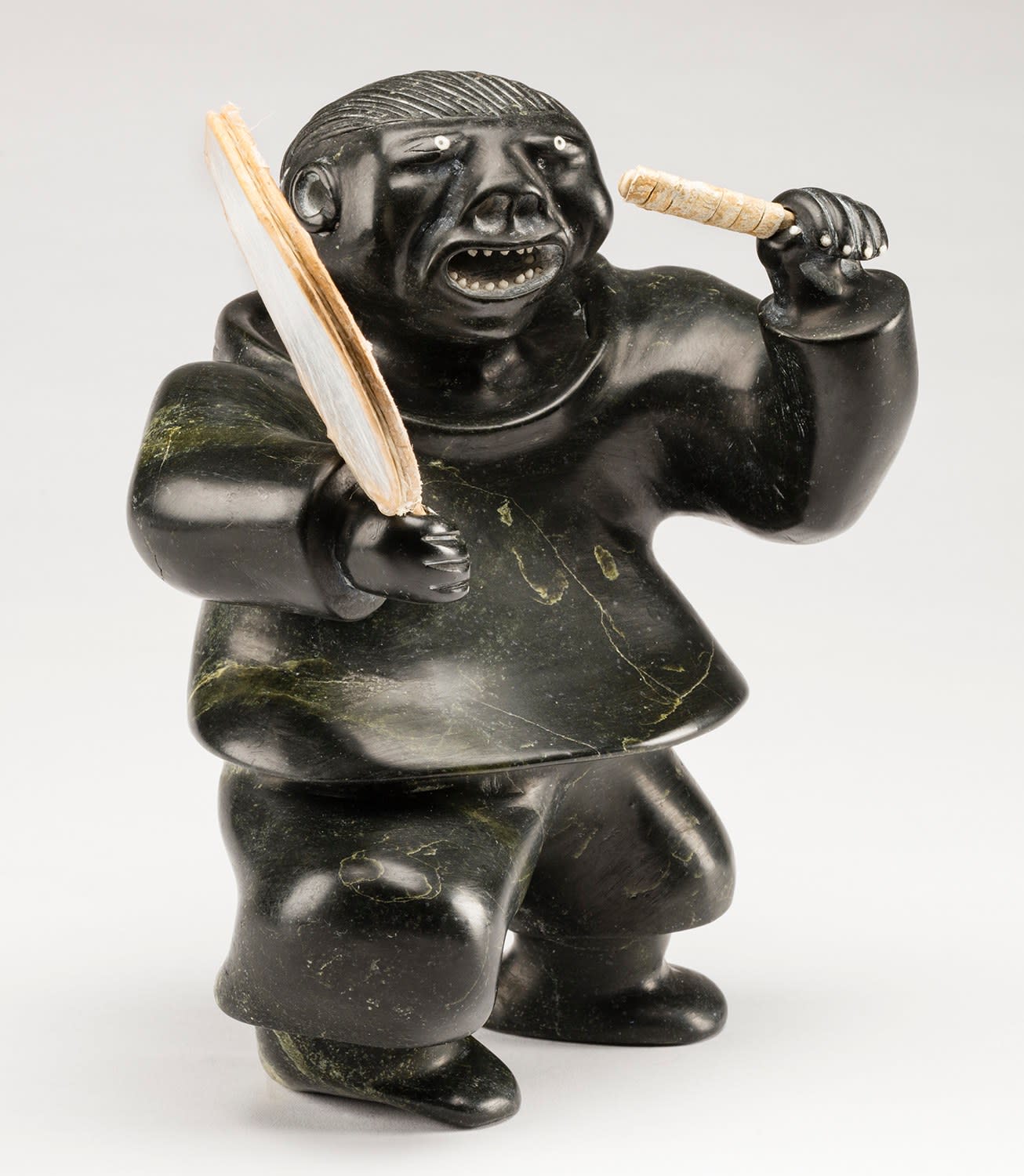JUDAS ULLULAQ (1937-1999) Uqsuqtuuq (Gjoa Haven)
unsigned.
ESTIMATE: $25,000 — $35,000
PRICE REALIZED: $22,400.00
Further images
Judas Ullulaq began carving in Taloyoak (Spence Bay) in the late 1960s and was apparently active throughout the 1970s; however, only a handful of works from this period have been documented. It was really only just before, and certainly after his move to Uqsuqtuuq (Gjoa Haven) in the early 1980s that Ullulaq began carving seriously. His career took off rapidly, and today Ullulaq is widely acknowledged as the most important artist in the Kitikmeot Region after Karoo Ashevak. In a 1983 solo exhibition catalogue Darlene Wight describes Ullulaq’s early style: “Ullulaq’s sculpture is an extension of his real world…. Single figures are always engaged in an action that infers a specific environment. There is a pervasive dynamism in the carved works that is revealed in body movements, gestures, and especially in the faces.” Wight also compares Ullulaq’s style with that of his famous nephew Karoo Ashevak’s: “However, Karoo’s subjects were often imaginary spirits with magico-religious significance. Ooloolah’s work…is of the real world. The reality, for him, consists of people and of human emotion” [1].
As did most artists working in Taloyoak in the 1970s, Ullulaq was influenced by his nephew Karoo’s works to some extent, but Ullulaq’s genius - and the reason for his subsequent success - is that he forged a strongly personal and immediately recognizable style. This style is informed by “pervasive dynamism” but also by a strong autobiographical impulse suffused with infectious and often self-deprecating humour.
Ullulaq eventually expanded his repertoire to include supernatural themes, but this exceptionally fine Drum Dancer is the perfect exemplar of an early subject and the dynamic style that made this artist famous. Looking at this work it is easy to see why Ullulaq became famous for his sense of craftsmanship; sculpturally, the figure’s forms seem relatively simple, but they are beautifully shaped and finished, and enhanced with exquisite inlaid details. The drummer’s face is highly expressive, with features that are distorted without being grotesque; his eyes, ears, nose, mouth, and hair are all positively wacky but are absolutely delightful in combination. His body is charged with energy and movement; we love the jaunty flare of the drummer’s parka and even his pant leg! We also admire Ullulaq’s inventive artistic liberties: the drummer’s left leg is impossibly short but compositionally it’s perfect.
1. Judas Ooloolah, 1983.
References: Stylistically, Drum Dancer resembles several of the sculptures from Ullulaq's first two solo exhibitions, both held in 1983. See the exhibition catalogues Ooloolah Spence Bay (Toronto: Innuit Gallery of Eskimo Art, March 1983), and Judas Ooloolah (New York: Alaska Shop Gallery of Eskimo Art, November 1983). Drum dancers by Ullulaq are not rare but not many have been published; for a 1996 example see Marion Scott Gallery, Vital North (Vancouver, 1996), cat. 30.
Provenance
Galerie Elca London, Montreal;
Acquired from the above by a Private Collection, Montreal;
First Arts, Toronto, 13 July 2022, Lot 39;
Acquired from the above by the present Private Collection, Toronto.
Exhibitions
Galerie Elca London, Montreal, Spence Bay Artists/Les artistes de Spence Bay, 1984, cat. 14.Publications
Galerie Elca London, Spence Bay Artists/Les artistes de Spence Bay, (Ottawa: Canadian Arctic Producers, 1984) cat. 14.Join our mailing list
* denotes required fields
We will process the personal data you have supplied in accordance with our privacy policy (available on request). You can unsubscribe or change your preferences at any time by clicking the link in our emails.












